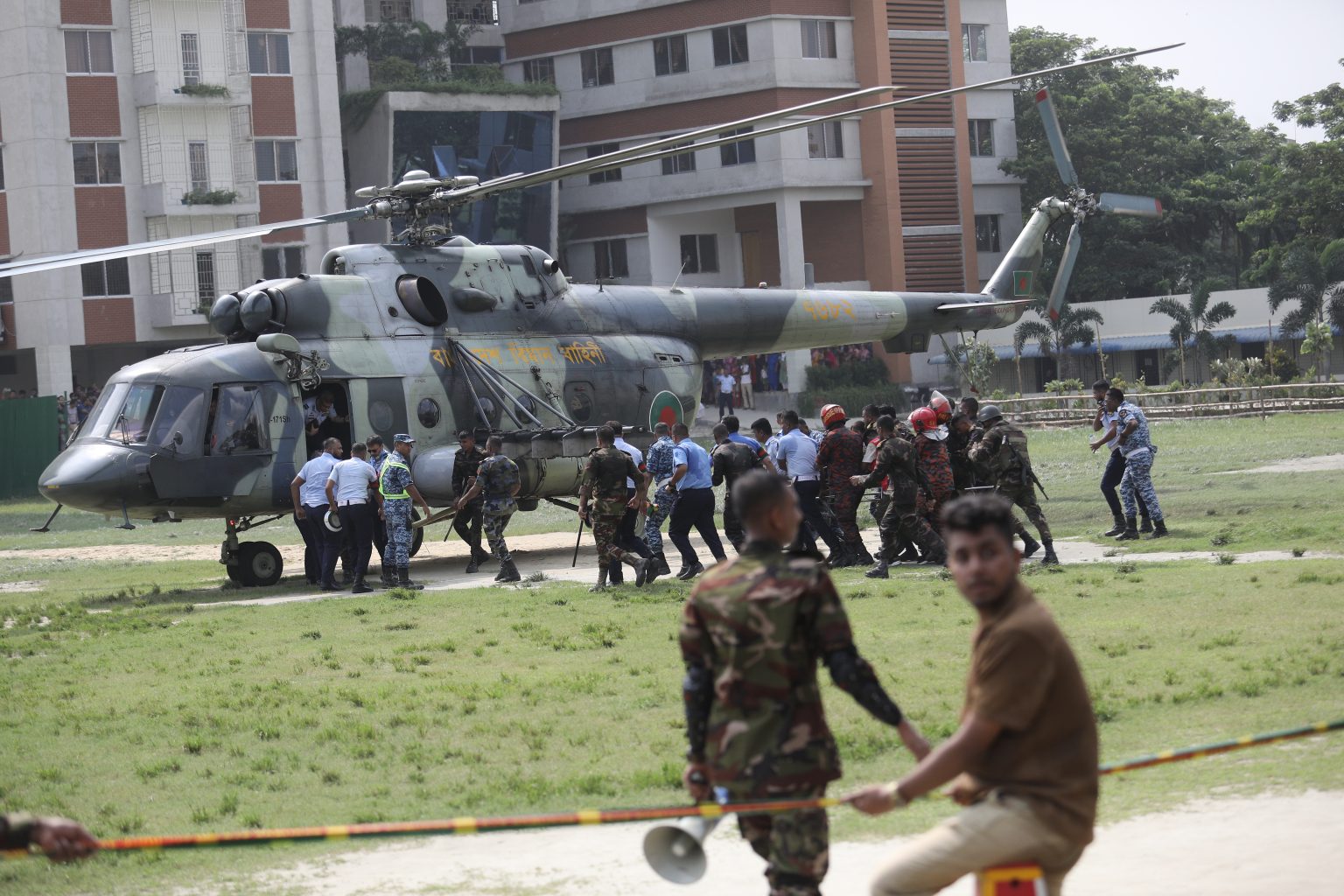Last Monday afternoon, a training fighter jet of the Bangladesh Air Force crashed into a two-storey building of Milestone School and College in Dhaka’s Uttara, triggering a deadly blaze and chaos within moments.
When the aircraft struck, senior English teacher Mohammad Sayedul Amin and several students were trapped in a second-floor classroom. As flames and smoke engulfed the building, Amin broke open a small gate on the balcony and led the students to safety—narrowly escaping what could have been a much worse tragedy.
In a first-person account published in Prothom Alo, the teacher described those terrifying moments that unfolded in just three minutes—but felt, to him, like an eternity.
“School had just ended. I was in a classroom with seven or eight students,” Amin wrote. “Suddenly, there was a loud noise. At first, I thought it was thunder—but the sky was clear. Then I saw flames on the coconut tree beside the building. While I was still trying to figure out what had happened, fire began to spread across the balcony and other parts of the floor.”
As smoke rapidly filled the corridor and classroom, Amin led the students to the washroom at the end of the western wing, trying to escape the suffocating air. But with fire closing in, he recalled a small iron “pocket gate” at the far end of the balcony—usually locked, as it was that day.
“I thought to myself, there’s no way to break the wall, but maybe we could break open the gate,” he said. “Standing between life and death, I had to try something.”
The children, he said, were paralysed by fear. Then, as he attempted to force the gate open with repeated kicks, a boy ran towards him—his shirt on fire.
“He screamed, ‘Sir, please save me.’ When I grabbed him, my hands almost caught fire too,” Amin recalled. He instructed the other students to douse the boy with water while he continued trying to break the gate.
Eventually, the thin metal bars gave way, creating a small opening. Just outside the gate stood a mango tree. One by one, students climbed down the tree to safety, and people from the ground rushed up to assist the remaining children.
“From the loud noise, to moving the students to the washroom, to breaking the gate—it all took about three minutes,” Amin wrote. “But those three minutes felt like an eternity.”
It was only after reaching the ground that he realised a fighter jet had crashed into their building. The aircraft had struck directly at the staircase on the ground floor, where Bengali-medium classes are held. The English-medium section, where Amin and his students were located, occupies the second floor.
“I didn’t hear the engine sound—just two loud bangs. The first was the impact. The second, I believe, was a fuel explosion,” he wrote.
Describing the building layout, he said there are twelve rooms flanking the stairwell—girls’ classes on one side, boys’ on the other—as well as laboratories and teachers’ rooms. He later learnt that another teacher and students in a nearby classroom were directly hit by the fire.
“When I got downstairs, I saw two bodies—dismembered. It was hard to stay composed. Imagine the state of the children,” he wrote. He also recalled seeing a girl in a burqa running out with her clothes on fire.
Though Amin and the students in his care all made it out alive, many were affected by smoke inhalation and minor injuries sustained while escaping. He said the boy who had run to him engulfed in flames was still alive and receiving treatment in hospital.
“Normally, we can withstand 40°C or more for a short time. But the heat that day was beyond tolerance. Combined with the smoke, it was unbearable. Had we been stuck for another minute or two, we probably wouldn’t have made it.”
Reflecting on the tragedy, Amin expressed deep sorrow for the lives lost—including a fellow teacher—and the children fighting for survival in hospital.
“Children like our own were burned to death right before our eyes. Many are now fighting for their lives. The flowers that have fallen—we’ll never get them back,” he wrote. “For those who survived, I pray to the Creator for their full recovery.”


